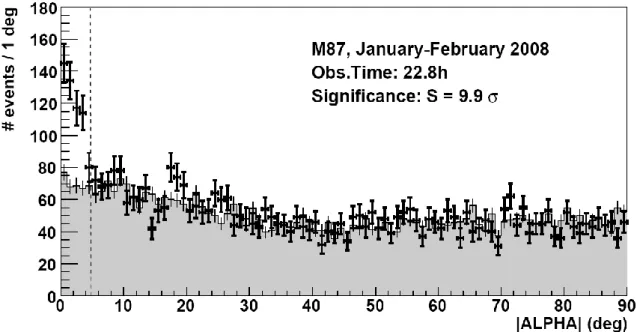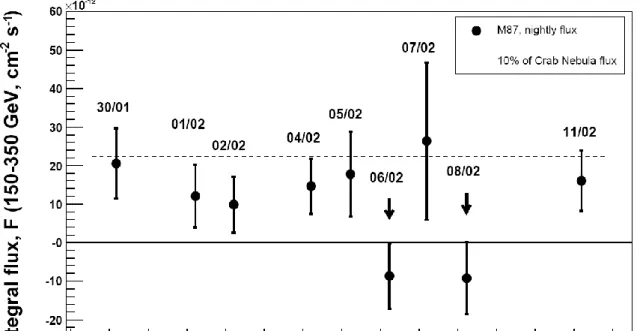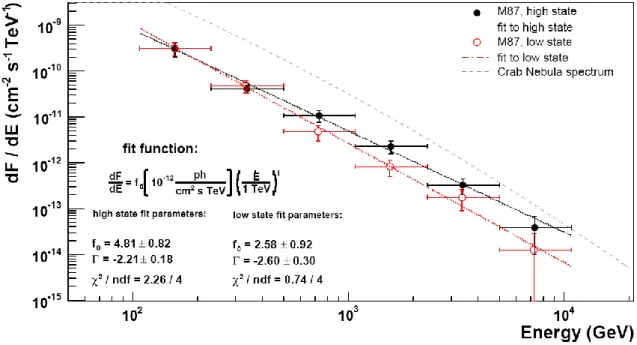Monitoring of the radio galaxy M87 with the MAGIC Telescope
Volltext
Abbildung



ÄHNLICHE DOKUMENTE
The EU’s Eastern Partnership sum- mit in Vilnius was anticipated with a palpable sense of satisfaction in Europe, and viewed as a power- ful indicator that EU policy in the
Ceasefire/peace negotiations should therefore include representatives of the Assad regime, Syrian political opponents and armed rebels from the Free Syrian Army, and
The cointegration test, shown in Table 9, (see Engle & Granger, 1987; Engle and Yoo, 1987, Table 2), shows that in the two cases with monthly data (models 5 and 6),
In the MAGIC telescope the measure of the absolute time is provided by a high-precision atomic clock (Rubclock), formed by a Rubidium standard frequency oscillator in conjunction with
The optical lightcurve shows 5 years of data from Tuorla blazar monitoring program and the vertical lines indicate the starting points of the MAGIC observations.. The inset shows
For the solution of the following excercises, include these methods in suitable subclasses of your rudimentary matrix class... e) Write a program for the LU decomposition of
we model the swimmer motion explicitly according to the more detailed second level and check whether the resulting equation can be mapped onto the coarse-grained
Modify the file uebung02.cc such that it creates VTK-outputs for the following combination of linear solvers, starting vectors and number of iterations:.. • Solvers: